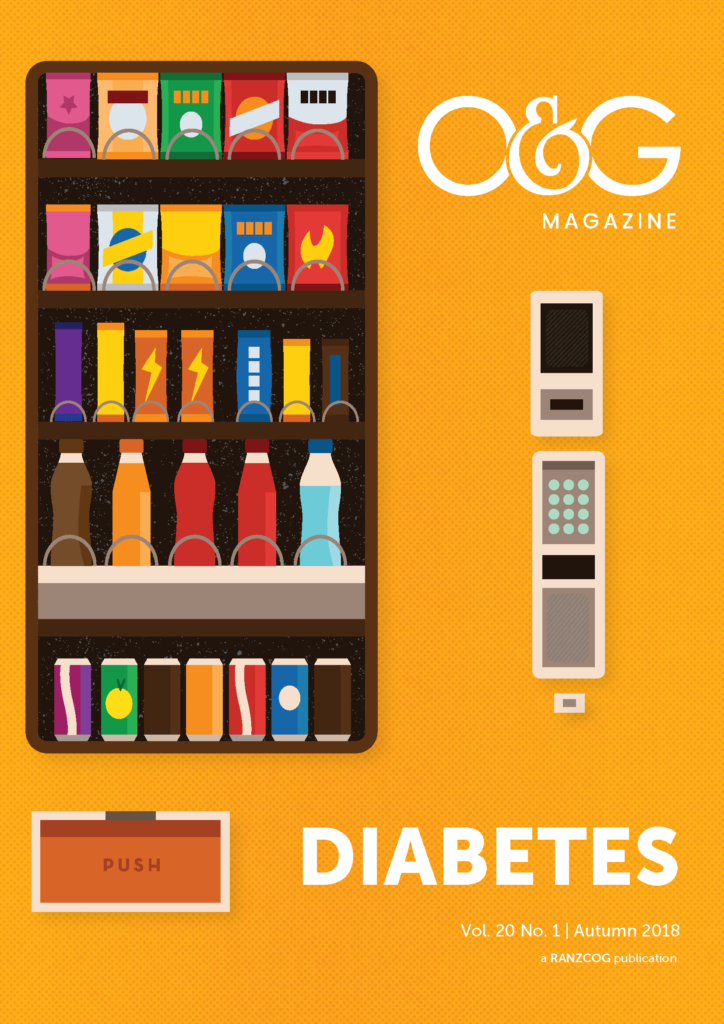Diabetes was first recognised as a National Health Priority Area in 1996. At least one in seven pregnancies in Australia is affected by diabetes. This rate can be as high as one in three pregnancies in some areas. One of the goals of the Australian National Diabetes Strategy 2016–2020 is to reduce the impact of pre-existing and gestational diabetes (GDM) in pregnancy. Areas targeted include pre-pregnancy planning for women with pre-existing diabetes; and appropriate testing, pregnancy management and postpartum care for women with GDM and their offspring.
It is, therefore, pleasing to see that this issue of O&G Magazine is dedicated to discussing issues related to the assessment and management of various aspects of diabetes, particularly in pregnancy. In this issue, we are taken on a tour of diabetes, ranging from basic science to research updates, touching on some of the more controversial topics.
GDM has been a much discussed area of obstetric medicine over the past decade, with great debate over whether recommendations from the International Association of Diabetes and Pregnancy Study Groups (IADPSG) for the diagnosis and classification of hyperglycaemia in pregnancy should be adopted locally. The Australasian Diabetes in Pregnancy Society (ADIPS) has largely endorsed the IADPSG recommendations (page 16). However, as Cox and Marnoch (page 14) report, this has not been the case in New Zealand.
The role of the dietitian and recommendations for appropriate gestational weight gain are both reviewed. Pregnancy may be the first time women receive dietary advice, which is increasingly important as rates of overweight and obesity rise. Lester (page 20) addresses barriers to dietary intervention, including patient compliance and access to resources and funding. We are reminded by Poulter and Meloncelli (page 22) that pregnancy provides us with a window of opportunity to change behaviour, as women may be more receptive and motivated during pregnancy. Timely advice (ideally pre-pregnancy or at the first antenatal visit) regarding appropriate gestational weight gain (Institute of Medicine guidelines, page 22), healthy eating and physical activity, is particularly important for women with diabetes.
Various aspects of type 1 and type 2 diabetes are also reviewed in this issue. Schibeci (page 25) takes us on an entertaining tour back to first year biochemistry, where he effectively analogises glucose with a soccer hooligan. Almeida and Mehrotra (page 29) provide a trimester-specific overview of the assessment of the fetus of a diabetic mother. Lee (page 32) reviews the indications for insulin pump therapy in pregnant women with type 1 diabetes, highlighting that women require a diligent personality to proactively manage an insulin pump. Moorhead et al (page 34) review the evidence for antenatal expressing in women with diabetes while Stock (page 38) provides evidence-based advice regarding the timing of delivery for women with pre-existing diabetes or GDM, as it relates to the risk of stillbirth. Finally, the ENDIA group (page 51) summarises the developmental origins and modifiable exposures for type 1 diabetes.
Overall, this issue highlights the breadth of issues relating to diabetes in pregnancy and sheds light on areas requiring future research.






Leave a Reply